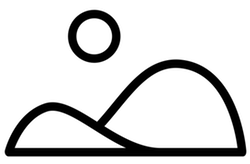Non-Negotiables
What are the things that must be, and how do we separate those things from everything else?

I won’t pretend to have the only answer to that question, but I have found a heuristic that works well for me when trying to draw the line. I ask myself the following question:
Is this the hill that I want to fight and die on?
Like so much else that is useful in my working life, this is not something that I came up with on my own*. This type of thinking (what I’ll call the “Hill test”) goes way back. But it is handy for helping me determine the importance of things. I think the Hill test works well because it takes things to an immediate extreme. I’m not going to have to fight about most things that I decide to do. Even if I do, many of those battles aren’t going to result in the death of my efforts. But by assuming the worst case, I am presented with a lens that helps me figure out if I’m going to be okay investing my efforts in a possible failure. If I’m not okay doing that, then I have a good signal that any particular initiative is not of the highest importance to me, and I can treat the effort as such.
Which doesn’t mean I don’t pursue things that fail the Hill test. I do a lot of that. It’s just that if/when those things meet resistance, I’ve already thought through how much resistance I’m going to be okay confronting before I abandon the effort.
I’ve also found that the Hill test is useful when I’m working with other educators. When a teacher is deciding how much effort to put into any particular goal, or how they should handle a disciplinary situation, answering the Hill test helps to provide some perspective. My typical approach is to administer the Hill test and explain that if the answer is “no,” that suggests that alternative ways forward should be explored. If the answer is “yes,” then let’s keep moving forward as long as there’s comfort knowing that things might still fail. A large part of my job is helping my staff determine their own non-negotiable and supporting my staff as they pursue them.
As a bit of an aside, I sometimes find that people default to other versions of the Hill test. Two variants are particularly common:
“Is this the Hill that you want to fight and win on?”
and
“Is this the Hill that you want someone else to fight and die on?”
Both of these show up. Neither is anywhere near as useful as the real Hill test, though their answers will give you information about the perspective and motivation of the person who asks them, and they can serve as useful discussion points.
Educators have a lot of stuff to do, and a limited amount of time to do it in. Using a structure like the Hill test to help set priorities and tease out those things that are truly important seems like a necessary part of the job. If you run your various beliefs and initiatives through a filter like the Hill test, you run a considerable risk of treating everything the same, or (even worse) going to extremes for things that don’t deserve it.
You need to be a member of School Leadership 2.0 to add comments!
Join School Leadership 2.0